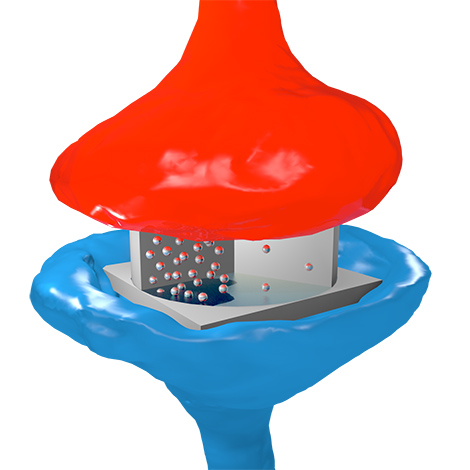Thank you to Junichiro Shiomi and the University of Tokyo for this image,

The research into cellulose nanofibers (CNFs) announced in this November 4, 2022 news item on ScienceDaily comes from the University of Tokyo,
Plant-derived materials such as cellulose often exhibit thermally insulating properties. A new material made from nanoscale cellulose fibers shows the reverse, high thermal conductivity. This makes it useful in areas previously dominated by synthetic polymer materials. Materials based on cellulose have environmental benefits over polymers, so research on this could lead to greener technological applications where thermal conductivity is needed.
…
Both cellulose nanofibers/nanofibres and cellulose nanofibrils are abbreviated to CNFs. This seems a bit confusing so I went looking for an explanation and found this September 22, 2020 posting (scroll down about 35% of the way) by professor Hatsuo Ishida, Department of Macromolecular Science and Engineering at Case Western Reserve University,
Both fiber and fibril indicate long thread-like materials and their meanings are essentially the same. However, the word,”fibril,” emphasizes a thin fiber. Therefore, the use of the word, “nano fibril,” is rather redundant. The word,”fibril” is often used for distinguishing high temperature water vapor treated cellulose fibers that are spread into very thin fibers from the whiskers prepared by the acid treatment of cellulosic materials. The word,” microfibril” is more often used than “nano fibril.” Some also use the word,”cellulose nanocrystal.” Cellulose whiskers are single crystals of materials and a typical length is less than a micrometer (one of the longest cellulose whiskers can be prepared from a sea creature called tunicate), whereas the cellulose nano fibril has much longer length. This material is much easier to scale up whereas cellulose whiskers are not as easily scale up as the nano fibrils. The word fiber has no implication and it is simply a thread like object. Thus, even if the diameter is more than hundred micrometers, as long as the length is much longer (high aspect ratio), you may call it a fiber, whereas such a thick fiber is seldom called a fibril.
Thank you professor Ishida!
A November 4, 2022 University of Tokyo press release (also on EurekAlert), which originated the news item, explains the interest in nanocellulose and its thermal properties,
Cellulose is a key structural component of plant cell walls and is the reason why trees can grow to such heights. But the secret of its material strength actually lies in its overlapping nanoscopic fibers. In recent years, many commercial products have used cellulose nanofiber (CNF) materials because their strength and durability make them a good replacement for polymer-based materials such as plastics that can be detrimental to the environment. But now and for the first time, a research team led by Professor Junichiro Shiomi from the University of Tokyo’s Graduate School of Engineering has investigated previously unknown thermal properties of CNF, and their findings show these materials could be even more useful still.
“If you see plant-derived materials such as cellulose or woody biomass used in applications, it’s typically mechanical or thermally insulating properties that are being employed,” said Shiomi. “When we explored the thermal properties of a yarn made from CNF, however, we found that they show a different kind of thermal behavior, thermal conduction, and it’s very significant, around 100 times higher than that of typical woody biomass or cellulose paper.”
The reason yarn made from CNF can conduct heat so well is due to the way it’s made. Cellulose fibers in nature are very disorganized, but a process called the flow-focusing method combines cellulose fibers, orientating them in the same way, to create CNF. It’s this tightly bound and aligned bundle of rod-shaped fibers that allows heat to transfer along the bundle, whereas in a more chaotic structure it would dissipate heat more readily.
“Our main challenge was how to measure the thermal conductivity of such small physical samples and with great accuracy,” said Shiomi. “For this, we turned to a technique called T-type thermal conductivity measurement. It allowed us to measure the thermal conductivity of the rod-shaped CNF yarn samples which are only micrometers (a micrometer equaling one-thousandth of a millimeter) in diameter. But the next step for us is to perform accurate thermal tests on two-dimensional textilelike samples.”
Shiomi and his team hope that their investigation and future explorations into the use of CNF as a thermally conductive material could give engineers an alternative to some environmentally damaging polymers. In applications where heat transfer is important, such as certain electronic or computational components, it could greatly reduce the consequences of discarded electronic equipment, or e-waste, thanks to the biodegradable nature of CNF and other plant-based materials.
Here’s a link to and a citation for the paper,
Enhanced High Thermal Conductivity Cellulose Filaments via Hydrodynamic Focusing by Guantong Wang, Masaki Kudo, Kazuho Daicho, Sivasankaran Harish, Bin Xu, Cheng Shao, Yaerim Lee, Yuxuan Liao, Naoto Matsushima, Takashi Kodama, Fredrik Lundell, L. Daniel Söderberg, Tsuguyuki Saito, and Junichiro Shiomi. Nano Lett. 2022, 22, 21, 8406–8412 DOI: https://doi.org/10.1021/acs.nanolett.2c02057 Publication Date:October 25, 2022 Copyright © 2022 The Authors. Published by American Chemical Society
This paper is open access.
